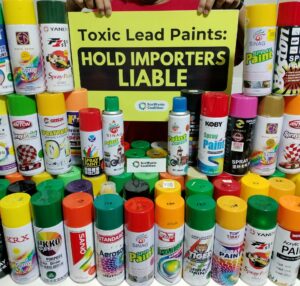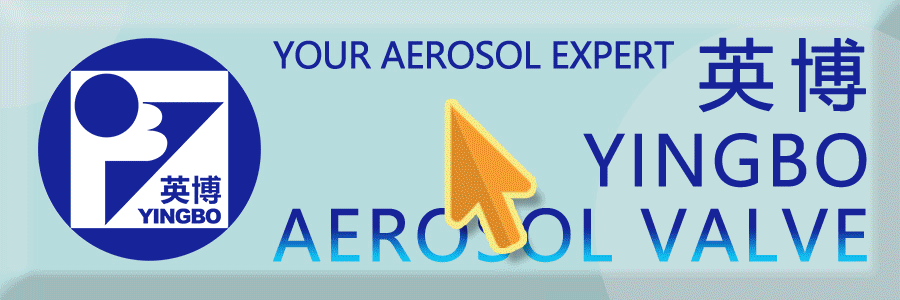EcoWaste identifies “illegal” lead additive levels in 168 imported spray paints

Such additives are in violation of the country's law.
The group's circulated its updated Public Notice on Lead-Containing Paints on World Consumer Rights Day (WCRD), on 15 March.
The report was co-published by the EcoWaste Coalition with the Philippine Paint and Coatings Association, INC (PPCAI) and the International Pollutants Elimination Network (IPEN).
The EcoWaste Coalition released the updated document in time for the WCRD to put emphasis on the importance of providing paint consumers with essential information to enable them to make safe and sound choices.
“Exposure to lead can cause chronic and debilitating health impacts in all age groups, and children are particularly vulnerable to its neurotoxic effects,” according to the United Nations Environment Programme (UNEP).
“There is no level of exposure to lead that is known to be without harmful effects,” the World Health Organization (WHO) stated.
The Public Notice currently lists 168 spray paint products representing 39 brands that were screened for lead by the EcoWaste Coalition using a portable X-Ray Fluorescence (XRF) spectrometer and subsequently submitted to SGS, a global testing company, for confirmatory tests.
The analysed paints were found to contain lead above 90 parts per million (ppm), the maximum limit for lead in all paints as per the Chemical Control Order (CCO) issued by the Department of Environment and Natural Resources (DENR).
Lead-containing spray paints from Thailand carry the No Pb pictogram despite their lead content.
Of the 168 analysed spray paints, 119 had lead levels exceeding 10,000 ppm.
Moreover, 50 of these paints contained a whopping 50,000 ppm to 212,000 ppm of lead, including eight with over 100,000 ppm.
These paints were mostly imported from China and Thailand, and none of them were manufactured or distributed by PPCAI-affiliated companies.
These lead-containing paint imports from China are sold at a chain store known for offering products at very low prices.
Aside from lead, this spray paint from China contains cadmium, mercury, hexavalent chromium and other highly toxic substances as shown on the label.
Of the 168 leaded paints, 33 were marked “lead free” or carried the “No Pb” symbol, giving consumers a false assurance that such products are safe from lead, a neuro and reproductive toxin and an endocrine disrupting chemical, too, according to the organisation.
To protect consumers from lead-containing paints, the EcoWaste Coalition implored importers not to bring into the country paints that have not been independently verified as compliant with the 90 ppm lead paint standard.
Importers should not rely on the “No Pb” and “lead free” claims on the paint cans unless supported by verifiable third-party certification, which should also be publicly accessible, added the group
As for spray paint distributors and dealers, the EcoWaste Coalition urged them to voluntarily withdraw leaded paints from the market and to return the remaining stocks to their suppliers for environmentally sound disposal.
As many of the lead-containing spray paints are being sold by online sellers, the EcoWaste Coalition asked the administrators of e-commerce and social media platforms to take down all product listings for violative paints, warn dealers, and suspend the recidivists.
Since 2020, the EcoWaste Coalition said it has discovered 205 imported aerosol paints with high lead content as a result of its vigilant market investigation and chemical screening using its XRF device.
While local paint makers, PPCAI affiliated manufacturers in particular, have diligently reformulated their products in compliance with the CCO and seven companies have even secured third-party Lead Safe Paint® certification, leaded paints from abroad continue to get dumped and sold in the marketplace, said the EcoWaste Coalition .
This enhances the need for strengthened customs checks, for improved compliance monitoring, and for stricter global rules to control the trade of lead-based raw materials in paint manufacturing, as well as finished paint products containing them.
Locally available
EcoWaste Coalition has discovered 14 spray paints with no added lead that are sold locally, reported Mindanao Times.
The non-detection of lead above the legal limit of 90 parts per million (ppm) in 14 spray paints provides clear proof that such paints can be produced without the intentional addition of lead compounds, said EcoWaste Coalition.
For its market investigation, the group procured online 10 samples of Omega All-Purpose Spray Paint labeled as “lead-free formulation” and had them screened for lead with the aid of a portable X-Ray Fluorescence (XRF) device. All 10 samples (deep green, Okee green, Yamaha green, orange, rose pink, orange red, signal red, silver red, art yellow and yellow) passed the regulatory limit for lead in paint.
Omega All-Purpose Spray Paint, costing P95 per 400 ml can, is imported and distributed by March Resources Manufacturing Corp., a member of the Philippine Paint & Coatings Association, Inc. (PPCAI).
The group also found four samples of Tradesman Spray Paint (forest green, Jialing red, scarlet red and art yellow) compliant with the lead paint regulation.
Sold for P99 per 400 ml can, the “made in China” Tradesman Spray Paint is exclusively manufactured for Handyman, one of the country’s leading hardware and home improvement chain stores.
Previous laboratory tests commissioned by the EcoWaste Coalition also found Bosny, Champ, Krylon, Pylox, Rust-Oleum, Sherlux and a few other spray paint brands compliant with the CCO’s 90 ppm limit for lead in paints.
“We laud the companies behind the Omega and Tradesman spray paints for proving that compliance with the country’s lead paint regulation is both feasible and necessary. We reiterate our appeal to all paint manufacturers, importers, and retailers to ensure that only lead-safe products are sold in the market as this will protect our people from the well-documented health hazards of lead exposure, especially among children, pregnant women, and the workers,” the EcoWaste Coalition concluded.














